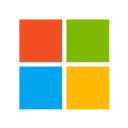
Companies that use OpenLDAP
It is a free, open-source implementation of the Lightweight Directory Access Protocol. Lightweight Directory Access is an application protocol that is used to crosscheck information on the server end.
1,549
companies
List of companies using OpenLDAP
OpenLDAP customers by country
OpenLDAP is used in 195 countries
Technology Usage Statistics and Market Share
How to target OpenLDAP users
- How to customize this list?
You can customize this data to your needs by filtering for geography, industry, company size, revenue, technology usage, job postions and more. You can download the data in Excel or CSV format.
- How to be alerted when companies adopt this technology?
You can get alerts for this data. You can get started by selecting the technology you are interested in and then you will receive alerts in your inbox when there are new companies using that technology.
- How to import this data to my CRM?




























































